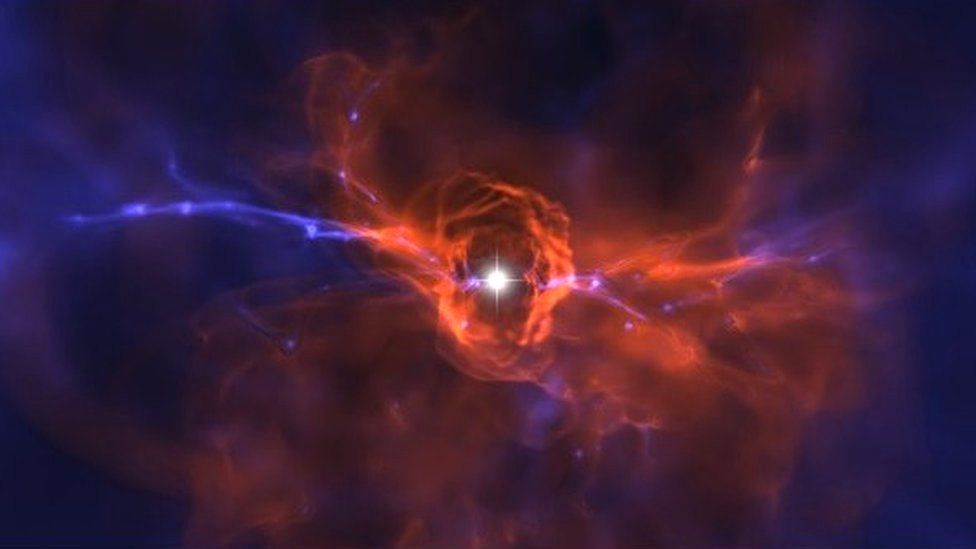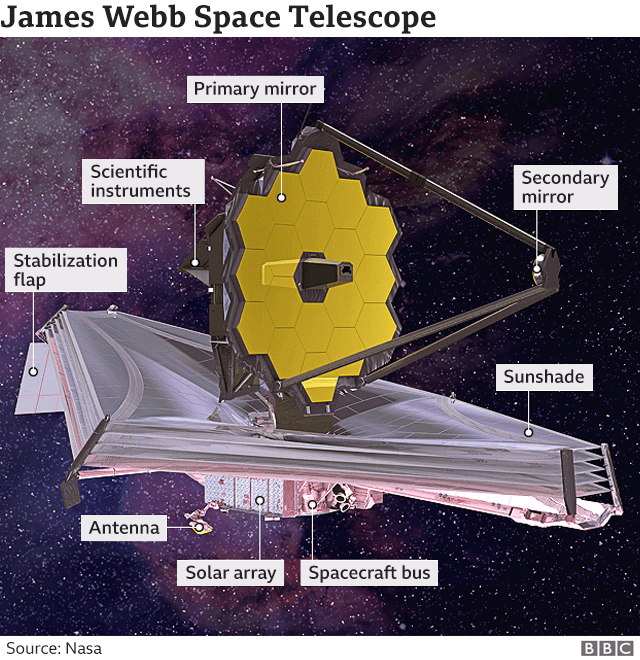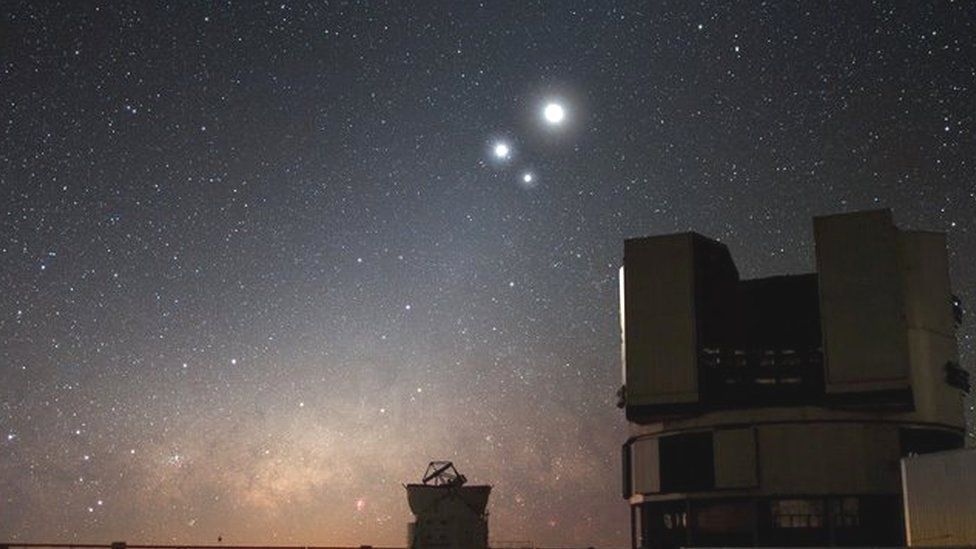
Astronomers have worked out when the first stars began shining.
They say that this period, known as the "cosmic dawn," occurred between 250 to 350 million years after the Big Bang.
The results indicate that the first galaxies will be bright enough to be seen by Nasa's James Webb Space Telescope, which is set to be launched later this year.
The study is published in the Monthly Notices of the Royal Astronomical Society.
Discovering when the cosmic dawn began has been the life's work of Prof Richard Ellis, from University College London, UK.
He told BBC News: "The Holy Grail has been to look back far enough that you would be able to see the very first generation of stars and galaxies. And now we have the first convincing evidence of when the Universe was first bathed in starlight."
The team analysed six of the most distant galaxies. They were so far away that even with the world's most powerful telescopes they appeared as just a few pixels on the computer screen.
They are also among the earliest to have emerged in the Universe and so, by the time their images are captured by telescopes on Earth, they are seen not long after the Big Bang.
By working out their age, the team calculated the start of the cosmic dawn - when the first stars formed. Dr Nicolas Laporte, from the Kavli Institute of Astronomy in Cambridge led the analysis.

"This is one of the biggest questions in modern cosmology. This is the first time we have been able to predict from observations when this crucial moment in the history of the Universe occurred."
Dr Laporte said that obtaining the result was a dream come true.
"It is fantastic to think that particles of light have been travelling through space for over 13 billion years and then entered a telescope. The wonderful thing about being an astrophysicist is the ability to time travel and witness the distant past," he explained.
The Universe came into being 13.8 billion years ago in the Big Bang. After an initial flash, it went through a period known as the cosmic dark ages. According to the new study, 250 to 350 million years after the Big Bang, the first stars emerged, bringing light to the cosmos.
Critically, the new analysis also indicates that the first galaxies are bright enough and within the range where they can be seen by the James Webb Space Telescope - the successor to the venerable Hubble Space Telescope. Astronomers may then be able to witness this crucial moment in the evolution of the Universe directly.

Scotland's Astronomer Royal, Prof Catherine Heymans, said she was "so excited" by this prospect.
She told BBC News: "Isn't it just so fantastic that, as humanity, a tiny civilisation on pPanet Earth, we can create a telescope that we can send up into space and we can peer back to the Universe as it was just a couple of hundred million years after the Big Bang!"
Many of the first stars were quite different to our own Sun. They were more massive and burned only hydrogen. But these objects created the next generation of stars that led to the formation of heavier periodic table elements.
Everything except for hydrogen, helium and lithium, is created inside stars when they explode at the end of their lives.
We are, therefore, ultimately made from the stars that were born close to the dawn of the cosmos.
"Because we are ourselves the produce of stellar evolution, we are looking back at our own origin," said Prof Ellis.
The researchers analysed starlight from the galaxies using both Hubble and the Spitzer Space Telescope. They estimated the age of the galaxies by examining the proportion of hydrogen atoms in the atmosphere of their stars. The older the stars, the greater the proportion of hydrogen atoms.

The team then calculated how far away the galaxies were. Because light from these galaxies takes time to reach us, the further away they are, the further back in time astronomers are observing them.
Because the six galaxies the team studied are at the limits of objects that can be observed by telescopes, they are also among the earliest known.
The team needed 70 hours of observing time, using four of the largest ground-based telescopes to estimate their distances. These were the Atacama Large Millimetre Array (Alma), the Very Large Telescope (VLT) and the Gemini South Telescope - all located in Chile - as well as the twin Keck telescopes in Hawaii.
These measurements enabled the team to confirm that they were observing these galaxies when the Universe was 550 million years old. Knowing the age of the galaxies and when they existed enabled the team to calculate when the first stars were born.
Similar estimates have been made using just single galaxies, but this is the first meaningful estimate based on a representative group of them.
Follow Pallab on Twitter.
Related Internet Links
"first" - Google News
June 24, 2021 at 07:59PM
https://ift.tt/3daGrBA
Astronomers work out when the first stars shone - BBC News
"first" - Google News
https://ift.tt/2QqCv4E
https://ift.tt/3bWWEYd
Bagikan Berita Ini














0 Response to "Astronomers work out when the first stars shone - BBC News"
Post a Comment